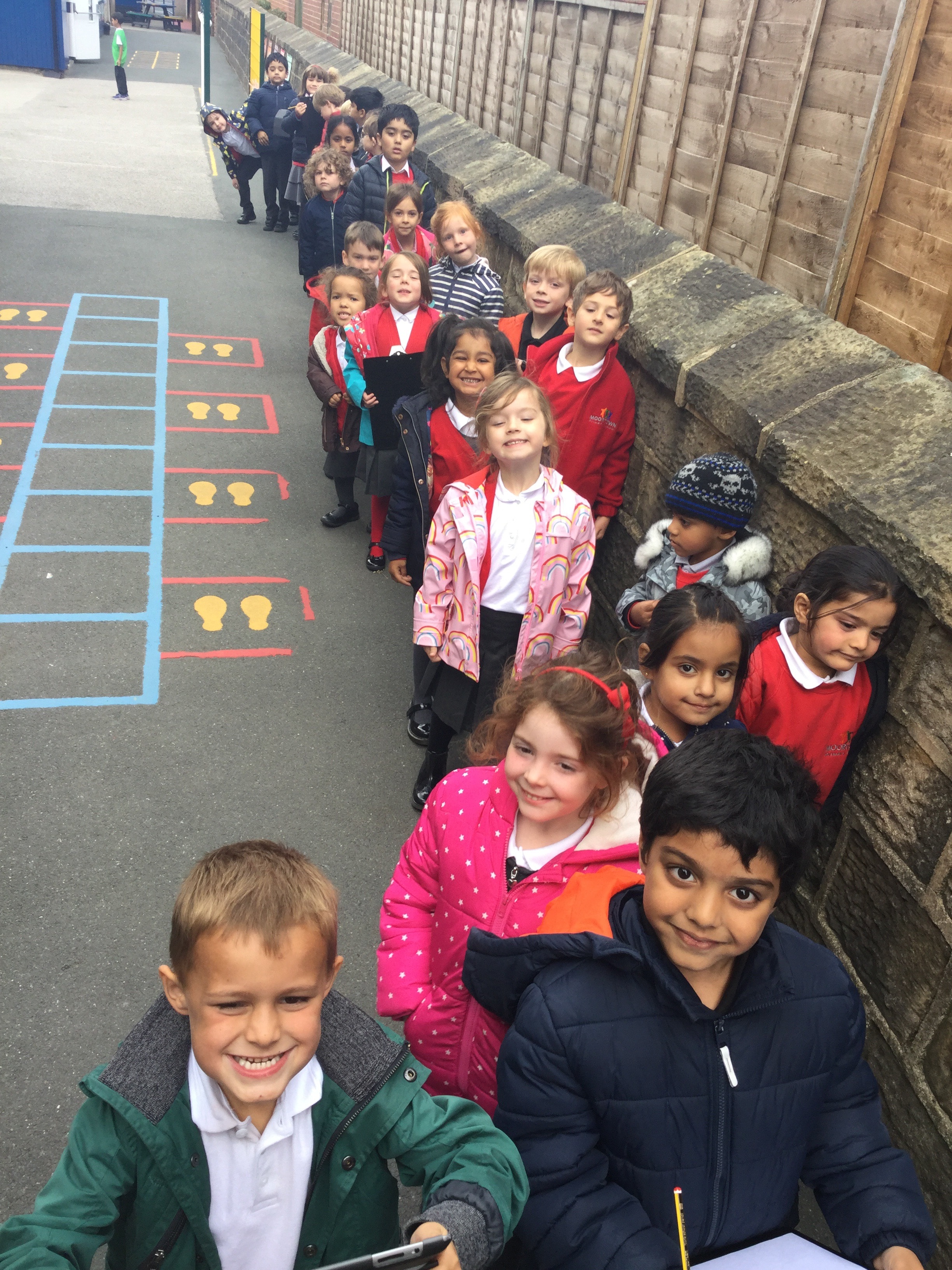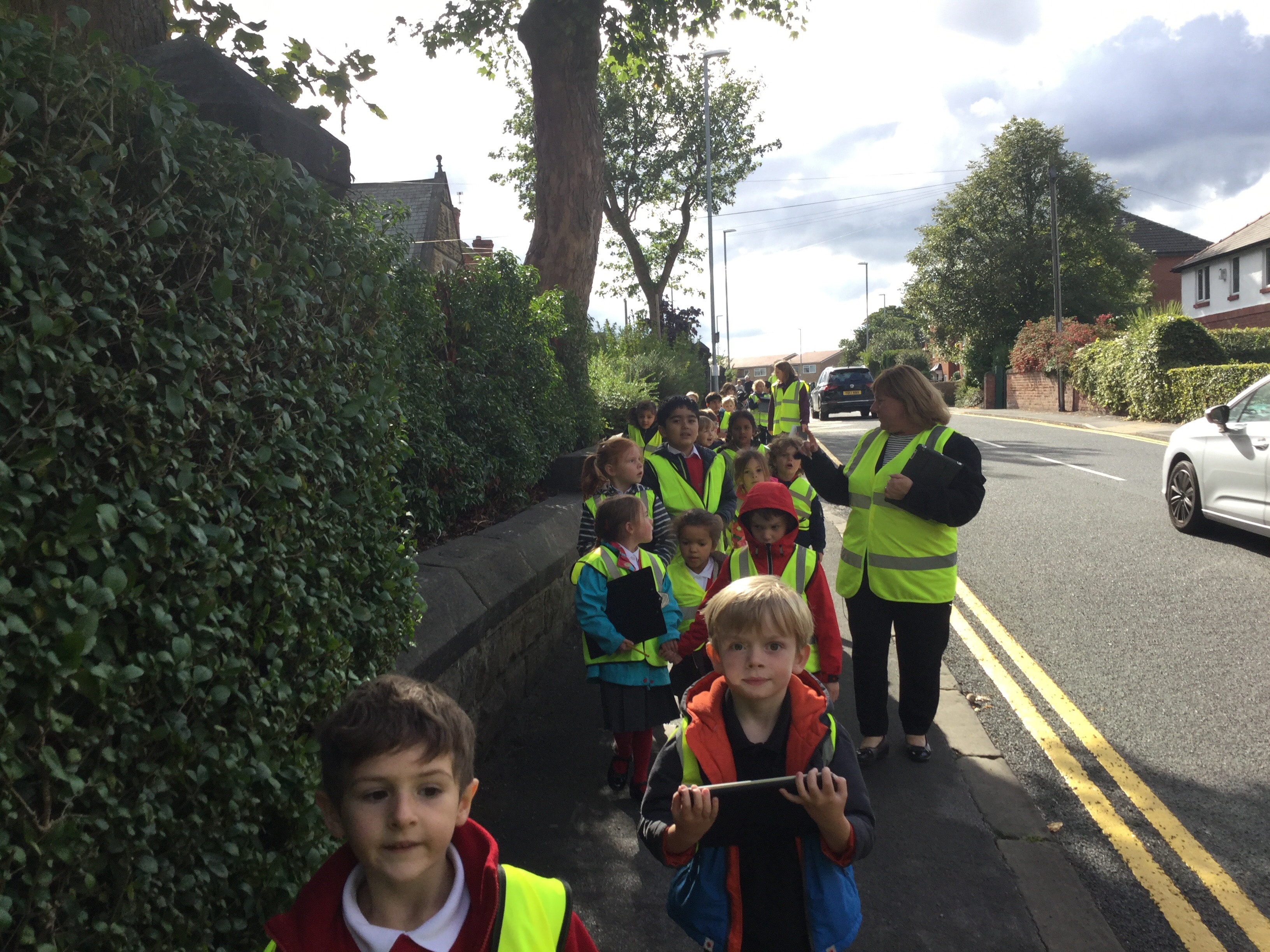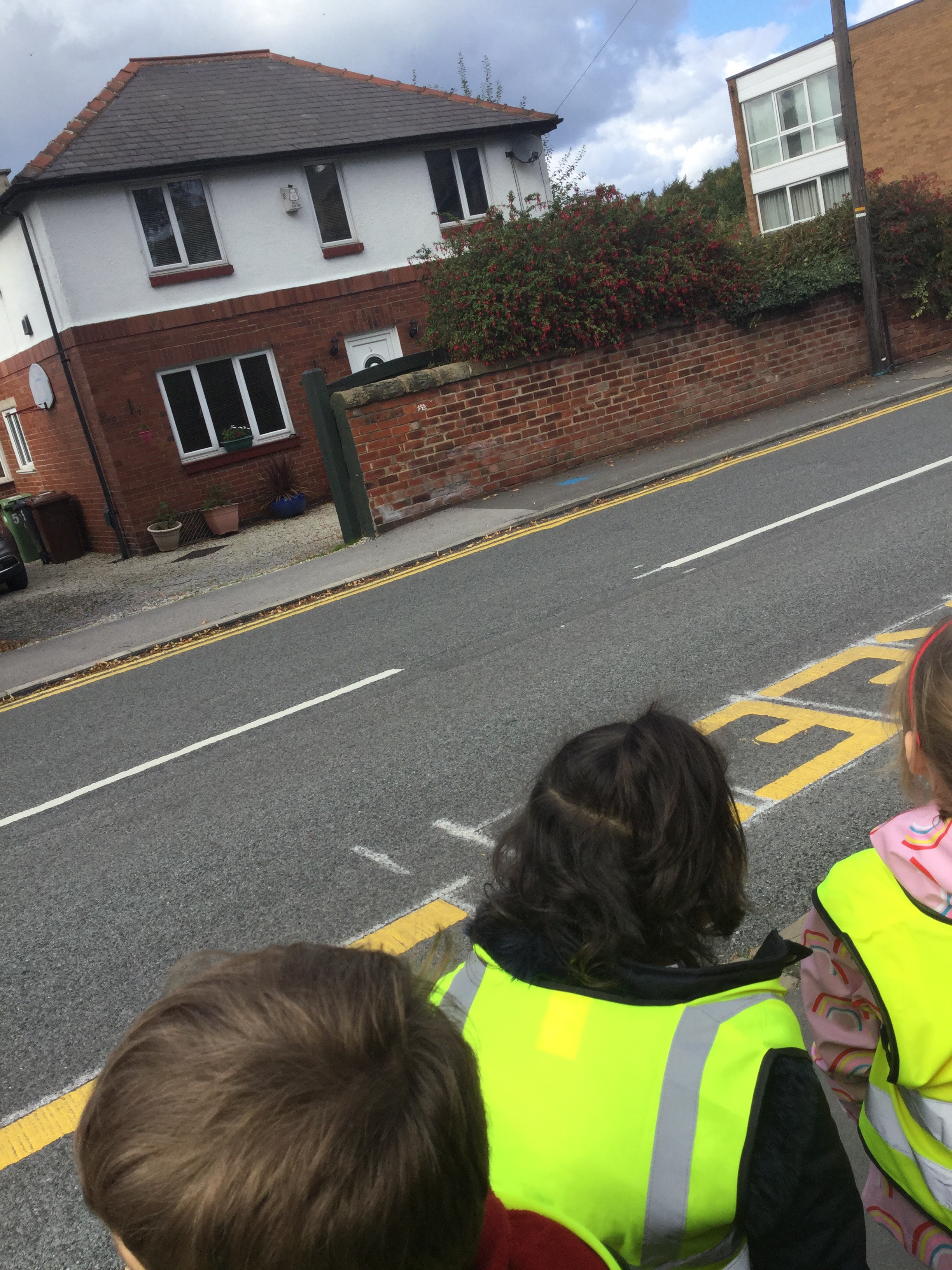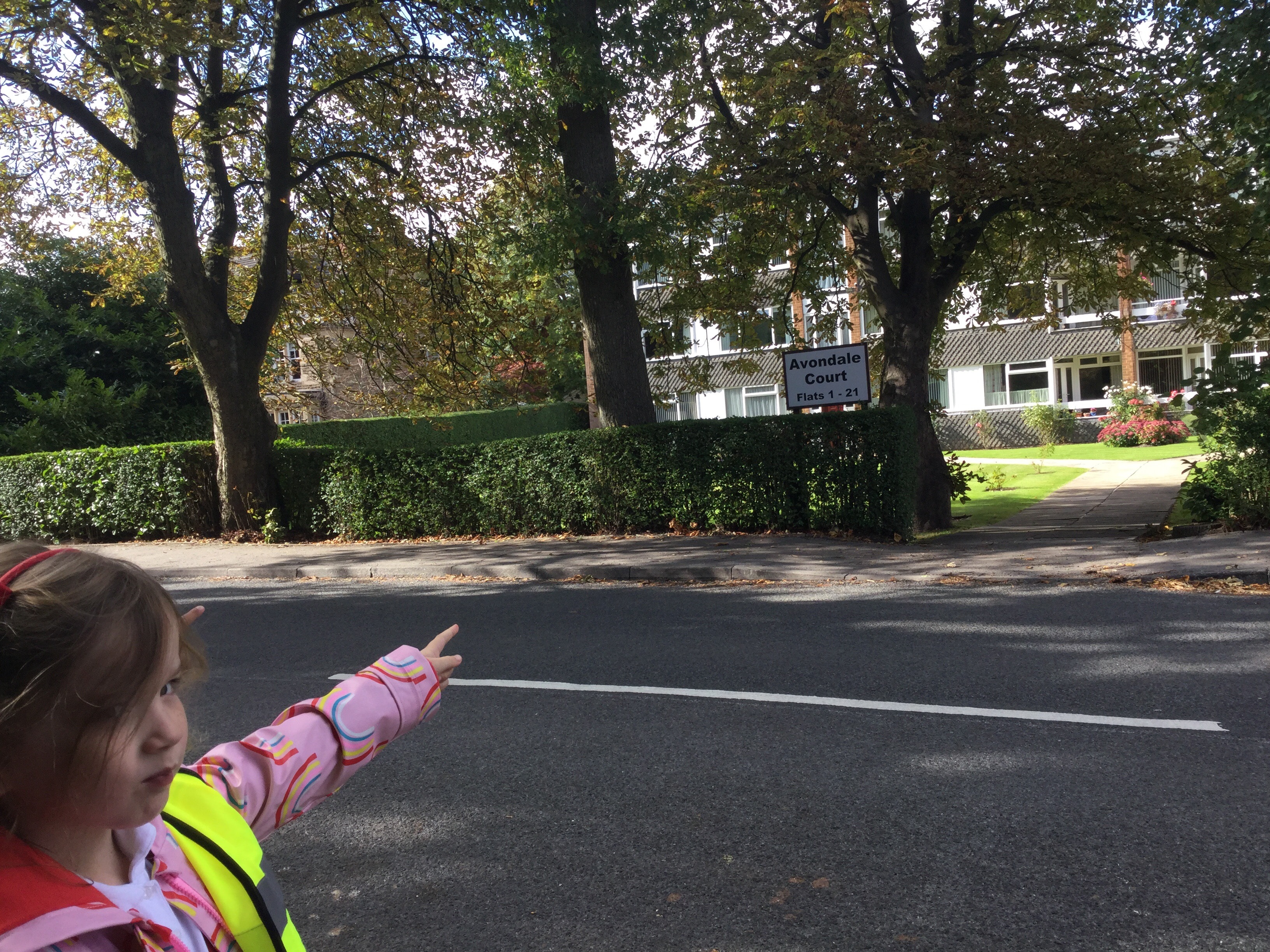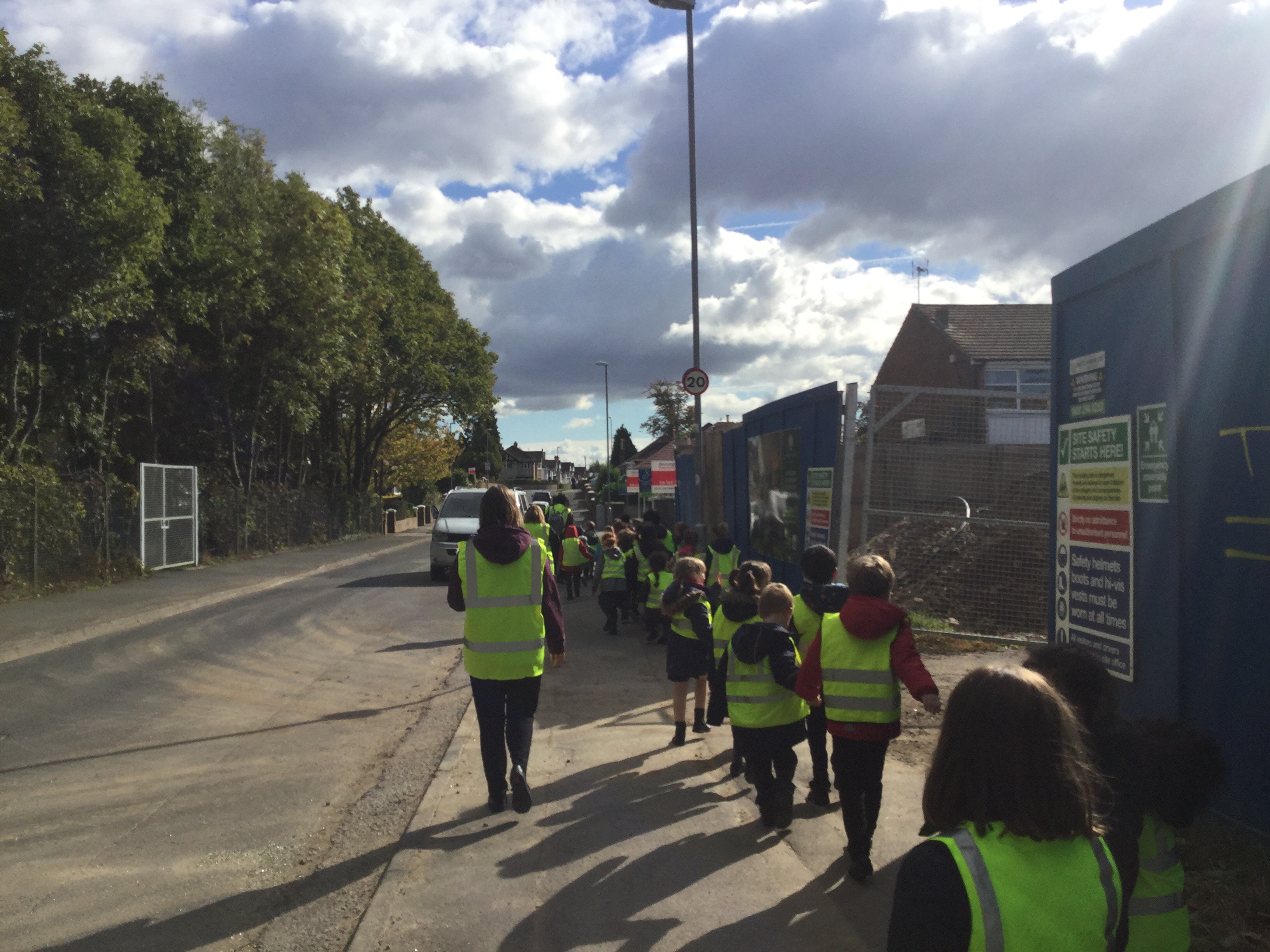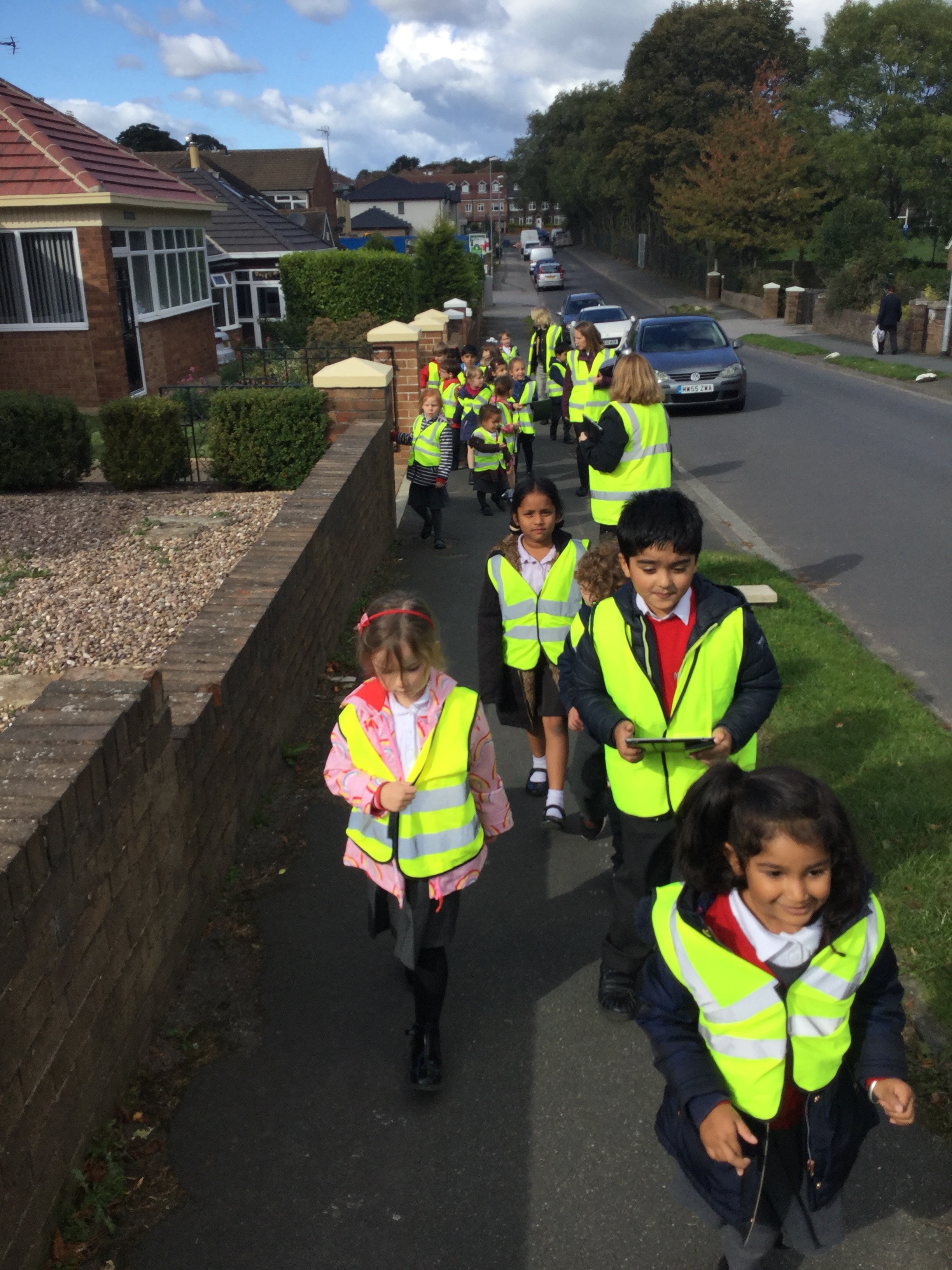Living & Learning
This week, reflecting and remembering are the two Rs for learning that we have focused on for Living and Learning. We talked about the importance of both of these Rs and what they mean to us. We also carried out a game that puts both of these Rs into practice.
The class sat in a circle and played ‘I went to the shops and bought…’. The aim of the game was to remember the sequence of items that the children before had listed, and then add to it themselves. Initially, we thought the class may struggle after ten items. As the session went on and more children had a turn, we quickly realised how wrong we were!
Without being prompted to do so, the class had made up actions to accompany each item that was listed. This meant that the class supported each other to remember the long shopping list. When we reflected on the task as a class, the children commented how useful the actions were when they were trying to remember all the items on the list.
Astonishingly, every child could remember the full 30 items on the shopping list! This was due to their quick thinking and developing a strategy to help them to remember. Well done, Year 3!
Ask your child – can they still remember any items?
Back to the Victorian times
This week, we have travelled back in time to the Victorian era in our Time Travel topic.
So far in this topic, our learning has covered some of the key history objectives the children need to know by the end of Year 2.
Firstly, the children were shown this object. They were asked to make and justify a prediction about what the item was used for and how it would be used.
Ideas included:
- a fire lighter
- a pump
- to pick up litter
- a brush for scraping
- to rake and collect grass
- to clean clothes
- a mop
- to squeeze water out of clothes
What do you think this could be?

After discovering that it was an early vacuum cleaner, the children were provided with some other vacuum cleaners and had to work together to place the objects in chronological order.





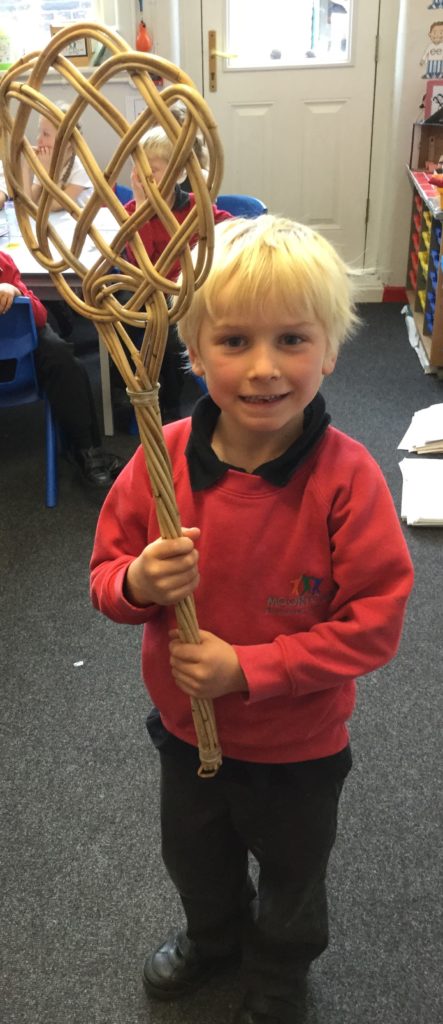

We talked about how each vacuum was different to the previous one and how this item has changed over time.
In this learning, the children were demonstrating the following historical skills.
- Sequencing objects over time
- Recognising that changes happen over time
- Debating different interpretations within their group
Reflection
LO: Reflect and Remember
What does reflect mean?
To reflect think deeply or carefully about.
synonyms:
think about, give thought to, consider, give consideration to, review, mull over, contemplate, study, meditate on, dwell on, brood on/over, agonise over, worry about, chew over, puzzle over, speculate about, weigh up, revolve, turn over in one’s mind
As part of our 8Rs for learning, today we thought about reflecting.
What does it mean to reflect? “Take some time to sit and think.”
What can you reflect upon? “I can reflect on the choices I make.”
Does reflecting help you to think about your next steps? “Yes, because I can change things.”
Road safety
Year Three greatly enjoyed their road safety assembly this week. Anne, from Leeds City Council’s road safety team shared some important messages to make sure the children know how to stay safe. See the pictures below!








Can your child remember the song about the Green Cross Code?
Living and Learning
This week’s Rs of Learning are remember and reflect.
We played some memory games, discussing how our short and long term memory work and developing some techniques to enable us to remember more.
We reflect on our learning lots and we’re pretty good at it too. Take a look at the blob tree that we sometimes use and discuss it with your child at home.
- Which blob represents you getting up in the morning?
- Which blob represents you on a Saturday?
- Which blob represents you being told to tidy your room?

‘Wheely’ good fun in topic
We’ve gone way back in time this week, right back to the Stone Age when the wheel was first invented. Through our Reading, Writing and Topic lessons, we’ve learnt all about the wheel (and axel), made our own Lego chariots, and written some great instructions for how to make them.
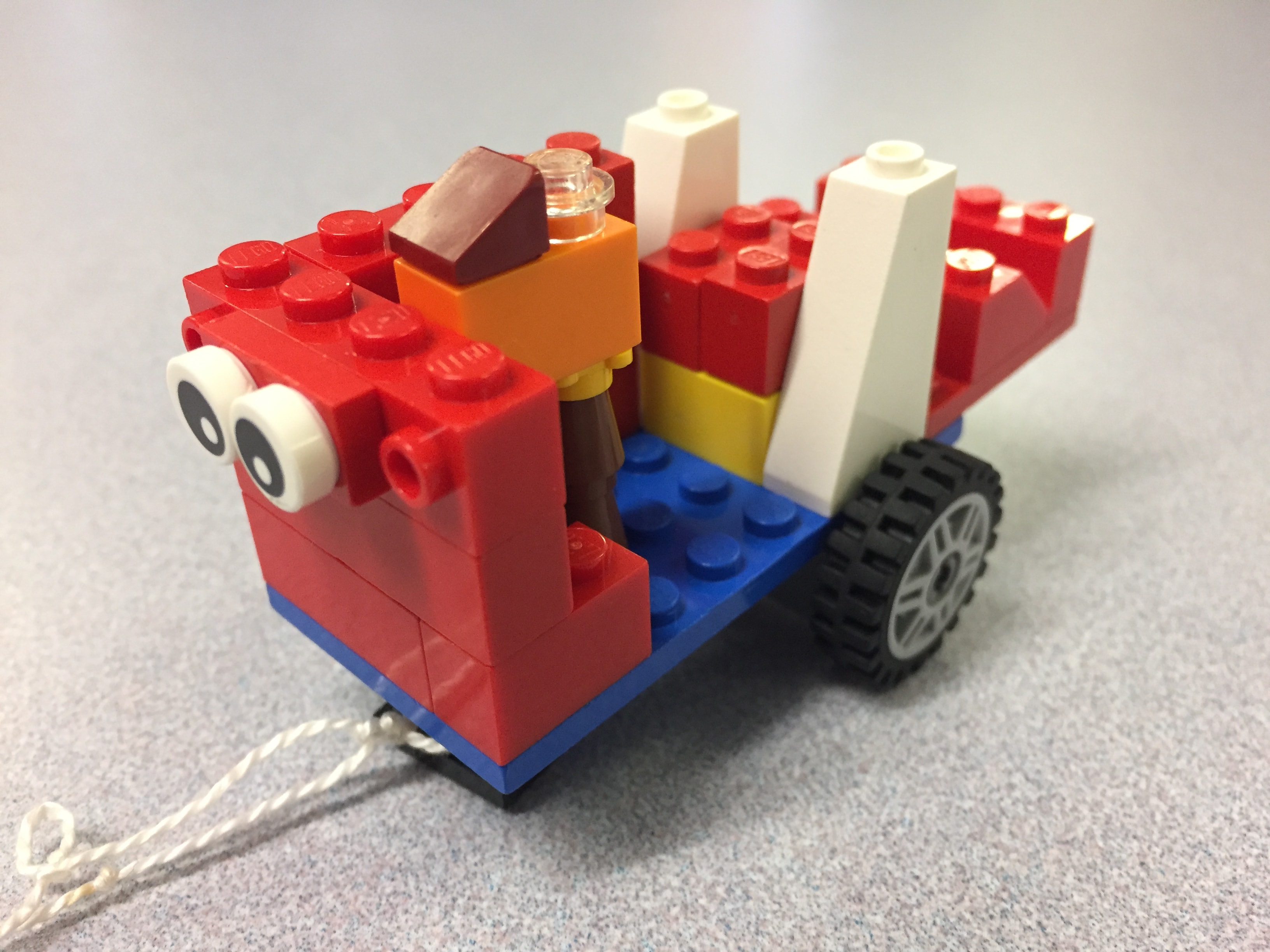
At home, ask us about the wheel and about our learning this week. It’s been really fun!
Traffic Survey into Maths
Yesterday, we thoroughly enjoyed our visit from Anne from Leeds City Council who came to take us down Shadwell Lane to conduct a traffic survey.
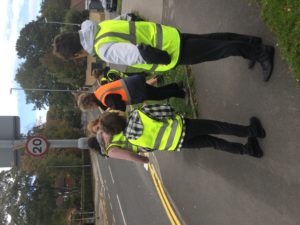
We recorded lots of data, including how many people were in each car, if they were wearing seatbelts and the many different types of vehicles we saw.
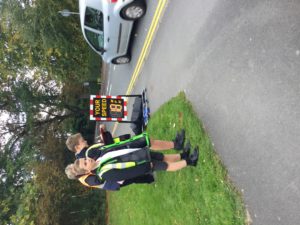
We also recorded whether drivers were doing anything to distract themselves such as eating, drinking or using a mobile phone which is illegal!
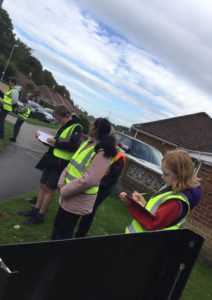
Using the speed camera Anne brought with her, we were able to see how fast the vehicles were travelling as they reached the 20mph zone. It was shocking to see that drivers took ages to slow down, some reaching 40mph at the 20mph cut off zone. Luckily, most slowed to under 20mph as they passed us or before.
Today in maths, we totaled up our tallies from the data we collected yesterday to produce some bar graphs. (This will refresh our statistics brains before we look at line graphs and two way tables in the coming weeks.)
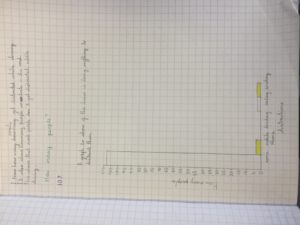
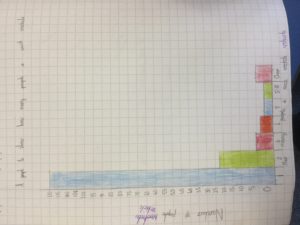
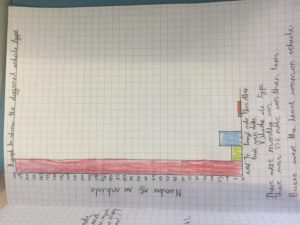
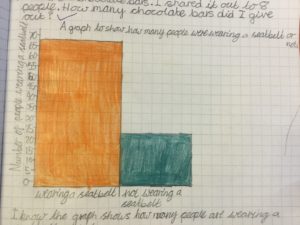
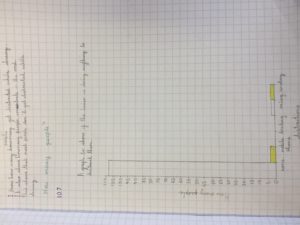
We wrote conclusions about our results: “I know 69 people were wearing their seatbelt and 14 people were not,” and “I know that 4 people were using their mobile phone,” or “I know that most vehicles had only one passenger in them.”
Wheely cool art
Continuing with our Time Travel – Inventions big topic, we looked at the invention that started them all turning: the wheel!
We designed and built three different chariots out of Lego and tested them on how well they carried passengers, traversed rocky terrain and competed in a race.
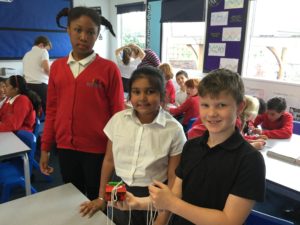
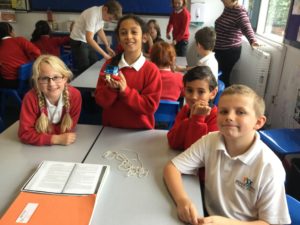
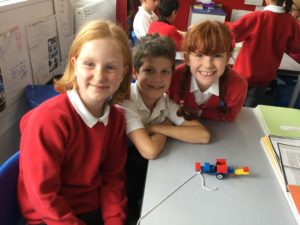
Next came the evaluation: we rated each category out of five and gave it an overall score.
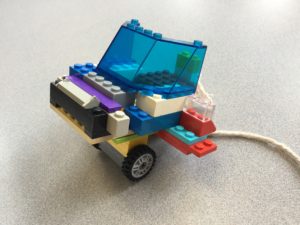
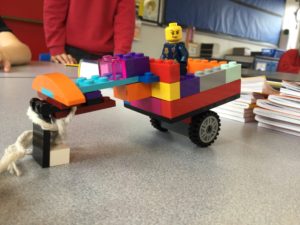
We’ve also done some wheely cool art this week. We explored complementary colours on a colour wheel and practised shading. Tone, which is the lightness or darkness of a colour, was something else we practised using our coloured pencils.
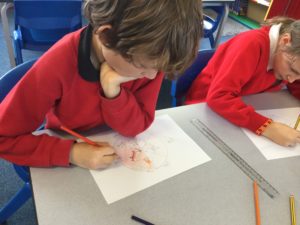
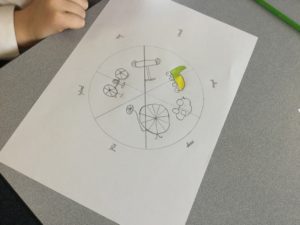
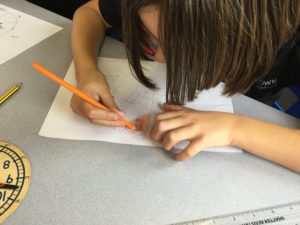
We decorated the colour wheel with pictures of inventions that have a lot to thank wheels for such as cars, segways, penny farthings, scooters and aeroplanes. The results were fantastic!
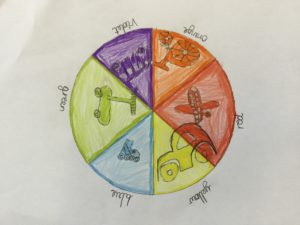

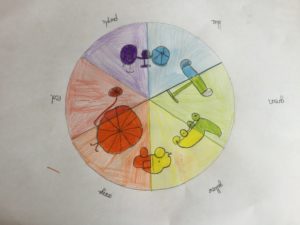
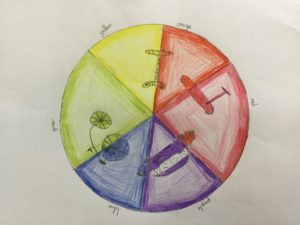
Can you spot the complementary colours, different tones and shading technique?
Living and Learning – Remembering a crazy journey!
This week’s Living and Learning session focused on remembering. We played a memory game where we had to watch a conveyor belt and remember as many items as we could.
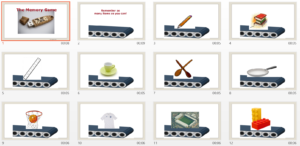
It was quite tricky because they were completely random and moved quickly along. We did well, though, averaging about 7 or 8 out of 12.
Next, came the remembering trick. We discussed remembering items by thinking of a route in our heads that we knew really well. At landmarks along our imaginary journey, we placed one of the items there. Our journey looked like this:
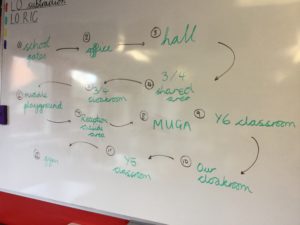
Here comes the trick part. At your first landmark on your the journey in your head, you imagine the item there but in a silly, crazy and unforgettable way! Imagine it’s vegetarian sausages at the school gates. You could imagine the entire school gates are made out of sausages that squelch between your fingers (William), an amazing sausage smell hits you out of nowhere (Dan) or instead of Mrs Weekes at the gate, it’s a giant, dancing sausage instead (Maggie)! Whatever it is, make it ridiculous, make it funny and make it stick!
We tried the memory game again but with different items and using our imaginary journey to help us. Bananas in Pyjamas were playing tig in the hall, a palm tree had erupted through the floor of the 3/4 shared area and SpongeBob Square Pants was taking his coat and bag off in the 5/6 cloakroom! Here are some notes from our second try:
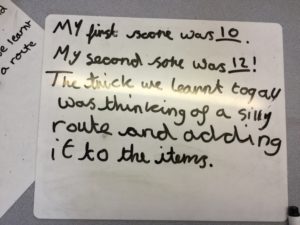
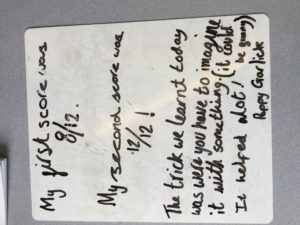
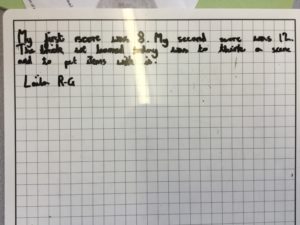
Almost everyone in the class managed 12/12, including Mrs Charlesworth! Quiz your child: can they remember the items, even now?
Local Area Walk
Last week, Year One went on a walk around the local area to kick off our ‘Time Travel’ topic. The aim of the walk was to compare old and new houses. The children took pictures of all different houses and wrote notes about the differences between old and new houses.
